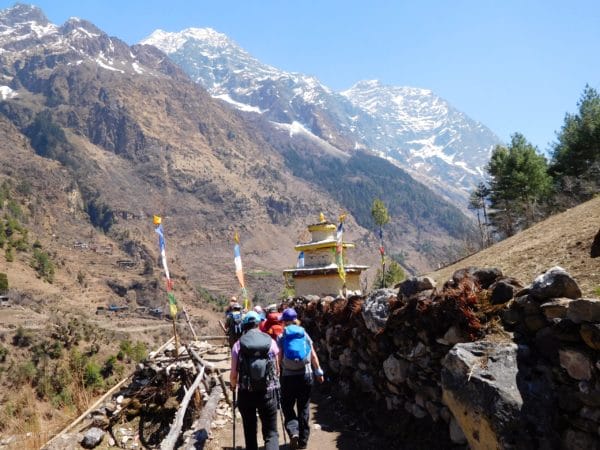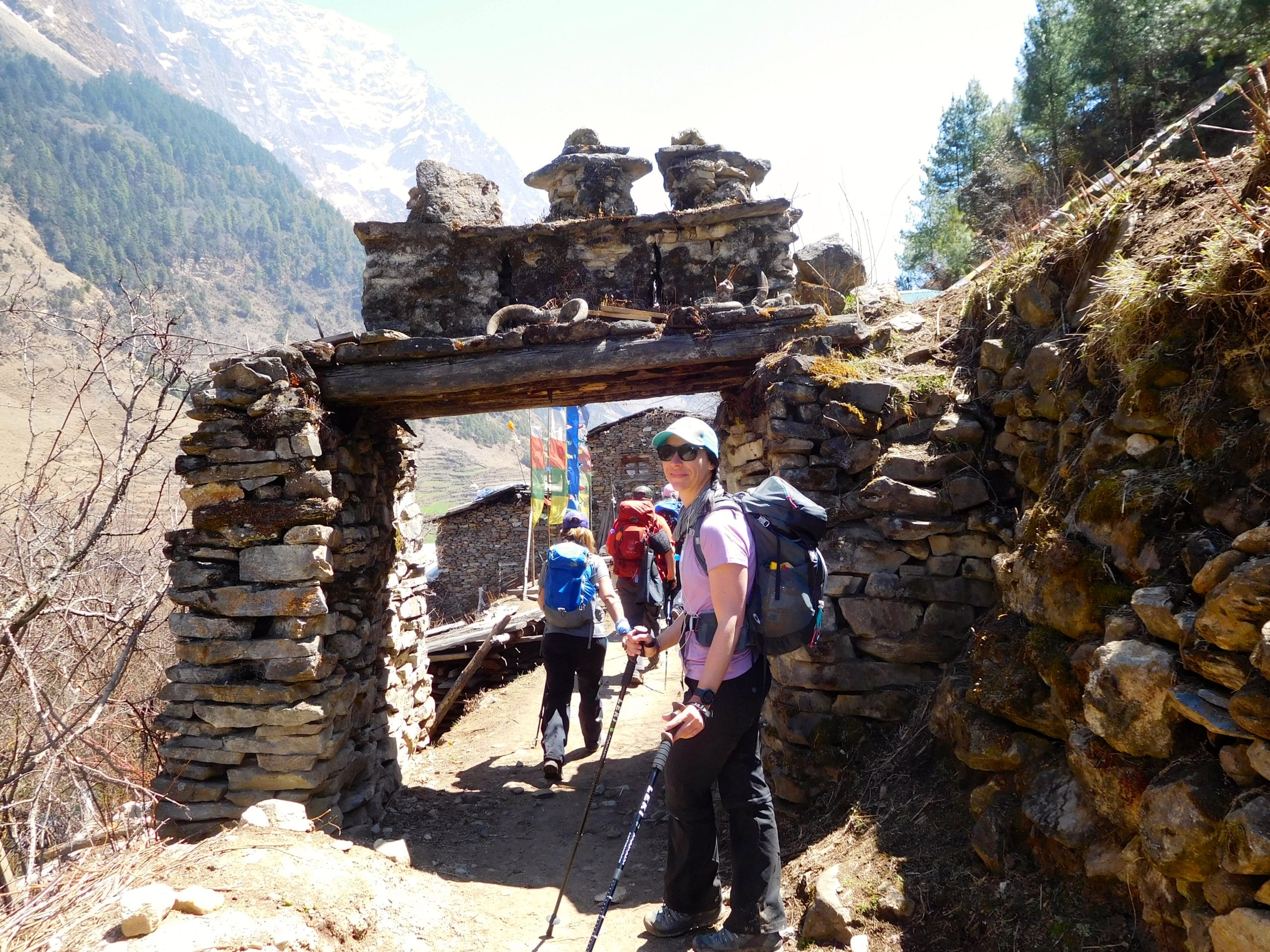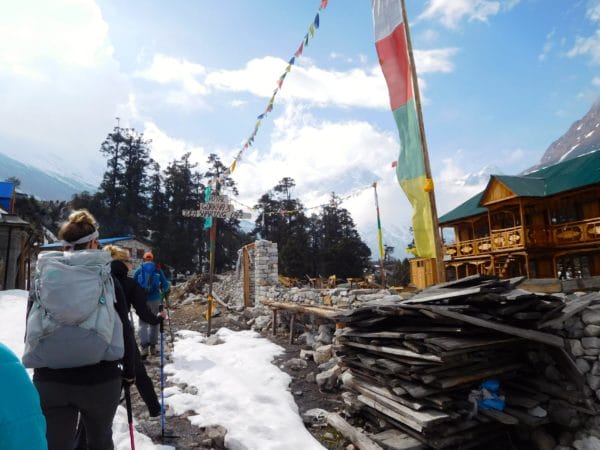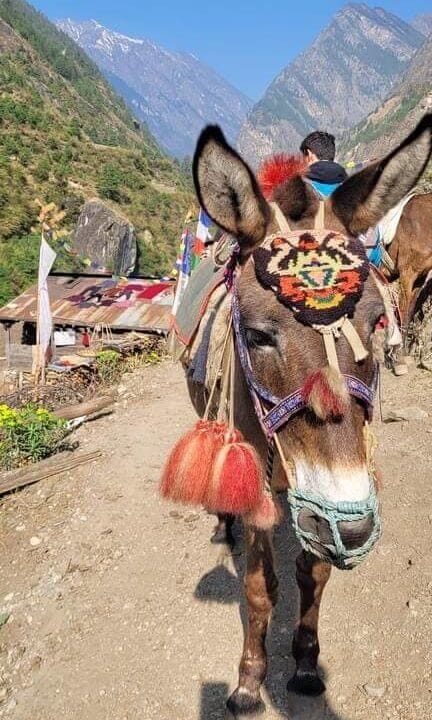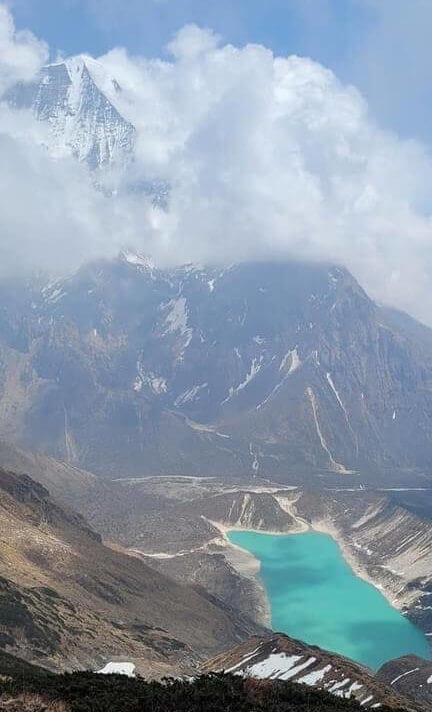Medical Mission Trips to the Himalayas
Thank you for your interest in IMR’s Himalayan Expedition medical mission trips! This is a very unique opportunity to work with populations that have little to no access to healthcare and make a huge impact on their lives.
The Need
According to the United Nations, Nepal ranks 138th in the world in overall human development and is stated to be the least developed Asian country. Nepal is also located in a vulnerable environment, susceptible to natural disasters including the Gorkha, which was a 7.8 magnitude earthquake in 2015. This earthquake destroyed several city and town structures, and also had catastrophic ramifications specifically in rural villages. This earthquake produced landslides that devastated rural villages.
Because the villages you will visit are remote, they have not benefited from the growth that larger areas have seen. At the medical camps, you will treat respiratory conditions, neonatal disorders, heart disease, and diabetes. You will also help to administer vaccinations and help treat conditions related to unsanitary drinking water. You and the rest of the volunteer team will also educate locals on how to stay properly nourished and how to care for their loved ones. One of the main focuses of this mission is dentistry. Because all community members are encouraged to attend, the demand for dental care will be high.
Our Work
International Medical Relief began making the Himalayan Expedition trips in 2017. Since then, we have served more than 1,000 people through nearly 100 staff and volunteers.
With diligent planning and preparation, IMR is dedicated to ensuring that specific goals are met on our missions, each in correlation to the United Nations Sustainable Development Goals 3 and 17.
IMR works to elevate vulnerable populations through shoulder-to-shoulder care with our local partners, creating workforce density, and a cadre of future healthcare and public health leaders in association to UNSDG 3: Good Health & Wellbeing.
In correlation with UNSDG 17: Partnerships for the Goals, our organization works in collaboration and at the request of local hosts where we are under their direct influence and affluence. IMR never goes into a country without a formal invitation where there is a great community need for medical or dental care, and health education.

The Mission
Nepal is undoubtedly one of the most fascinating places on Earth and is a top destination for adventure tourism. The nation is home to the world’s uppermost roads, longest walking track, sacred monasteries, stone huts, colorful rooftops, and bustling markets. Nepal boasts the highest summits in the Himalayas, which also happens to be the world’s most glorious mountain range as it contains nine of Earth’s ten tallest mountains. However, Nepal is still experiencing extreme rates of poverty and malnourishment.
International Medical Relief (IMR) has coordinated with local Sherpas to organize an epic medical expedition just for IMR, bringing medical assistance to isolated villages surrounding the Manaslu Circuit. This once-in- a-lifetime opportunity was uniquely designed by Sherpa friends of IMR to offer a very exclusive opportunity to not only trek around the world’s eighth highest mountain, including crossing Larkya La pass, but also to provide medical care along the way. You will meet first hand with Sherpa communities and friends as you participate in an exclusive medical and cultural trek in this remote Himalayan area.
The Manaslu Valley Trek is more remote and spectacular than many, with rough steep tracks and long days on the trail. It is culturally fascinating with strong continuing links to Tibet in the upper Buri Gandaki (called Nupri ‘the western mountains’) and the Tsum Valley, and even has the Larkya La (5160m) as a challenge. The views of Mt Manaslu are marvelous and close. This trek would appeal to anyone who is looking for a challenging trek in a remote region of the Nepal Himalayas. The trail has scenery similar to the classic Annapurna Circuit but is far less crowded. This trip will be physically demanding but you can trek at your own pace each day and will always be in the company of a professional guide. As you make friends along the trail, you will find yourself thinking much more about conversation and the beautiful place you are in rather than the trekking!
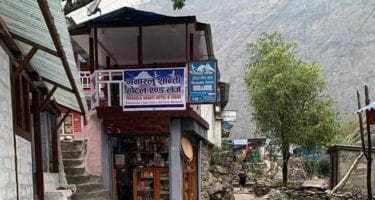
Lodging & Transportation
Lodging will be in clean and safe accommodations. Volunteers are assigned shared rooms with single beds and will be paired by gender, age, and profession respectively. For volunteers who prefer to have their own room, you can upgrade at any time leading up to your mission’s departure. Ask our office about a single supplement at office@imrus.org. If you are traveling as a couple or family, let our office know and we will do our best to accommodate you. All ground transportation to and from your accommodations to clinic sites is provided by safe, reliable drivers.
Yesterday I just sat down in my apartment and cried. This trip has been overwhelming in the greatest possible way. The pain, the fear, the accomplishment, the pride, the vulnerability, the innocence of it all is beautiful to me. Feelings I never thought I had the capacity to feel. Perception that I didn't think existed until now. A reality that was unknown to me. I just would like to give an enormous thank you and the warmest of hugs to the entire team, the team leader, the guides, the porters, and to International Medical Relief. You guys are out of this world amazing.
Juliette, Team Himalayas

Trip Highlights
This trek includes a visit to Tsum Valley, which includes one of Buddhism’s sacred hidden valleys, called a Beyul, where you will see important ancient monasteries and remote villages. The Tsum valley was only opened for trekkers a few years ago, and therefore is a new place to explore with little impact from tourism. Beyuls are hidden valleys that Padmasambhava blessed as refuges to be discovered when the planet is approaching destruction and the world becomes too corrupt for spiritual practice. They are valleys reminiscent of paradise, which can only be reached with enormous hardship. Your team and you will spend a cultural sightseeing day in Kathmandu with an English-speaking city guide. On the last night of your trek, you will have a celebratory farewell dinner with traditional Nepalese dancers.
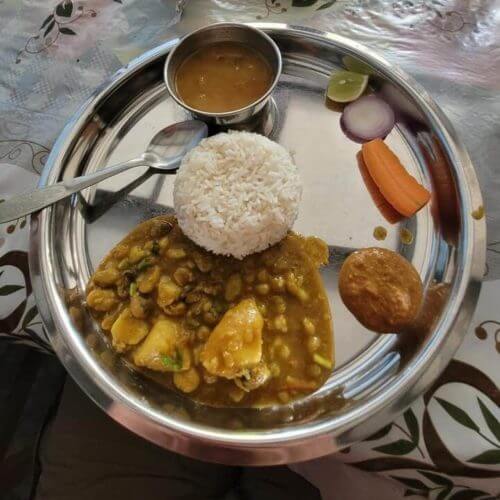
Food & Water
All food is typically provided during your stay. Please refer to your unique itinerary on our website to review which meals are provided each day. We may hire local people to cook for the team during our visit, or we may eat at restaurants or hotels. Lunch in clinic may include sandwiches made by the team or a feast prepared in your honor by community leaders. We recommend bringing snacks to eat during the day or evening or to supplement your lunch. High protein/high fat/high energy snacks are best. IMR also provides all of the drinking water for the team. Hydration and nutrition are extremely important for the health of the team. You are the best judge of your own health so please pack appropriate snacks and stay well hydrated on the trip.
Extend Your Stay!
Since you’re journeying halfway across the globe, have you considered extending your stay to visit some of Nepal’s top spots? Join International Medical Relief on an exclusive mission extension provided by our partner, Worldwide Navigators! Enjoy a guided trek by sherpa company, home to the first Nepalese woman to summit Annapurna IV, breathtaking views of multiple peaks towering over 8,000 meters, and participate in conservation efforts to keep trails pristine and sustainable.
Itinerary
Itinerary is subject to change without notice.
Full Mission (13-16 Days)
Arrivals
You and the team will fly into the Tribhuvan International Airport in Kathmandu, Nepal. Flying to Kathmandu on a clear day will provide a panoramic glimpse of the mighty Himalayas that will stay with you for the rest of your life. We will meet our local driver and proceed to the hotel. At the hotel, you will be briefed about your daily activities.
Day 2
Drive to Soti Khola via Arughat (around 9 hr drive)
After early morning breakfast, we will be picked up from the hotel and will begin our journey towards Sotikhola via Arughat the starting point of our trek. The drive from Kathmandu to Dhading Besi is comfortable, however, be prepared for a bumpy ride with winding dirt road and rough terrain on the road from Arughat and then to Sotikhola. Though a rough ride, this is an incredibly beautiful area and the majestic sites will serve as a perfect distraction. As we follow the Budi Gandaki River towards its point of origin, we will pass the village of Morder and Simre to reach the Arkhat River and descend to Kyoropani. Finally, we will reach Soti Khola where we spend our night.
Day 3
Trek to Machhakhola (Approx. 5-6 hrs)
Today is the first day of our trek. We walk by the dense forest passing through a number of small villages tucked into the hillside, until we reach a widening of the valley, opposite the point where a large tributary stream enters the Budhi Gandaki River. The terraced cultivated fields belong to the upper village of Lapubesi (880m). Descending down through the wide, sandy riverbed, which follows a trail meandering below the steep, craggy valley side, we then climb again to a ridge to Almara. Further on, a guide will lead us to Machha Khola, which literally means “Fish River.”
Day 4
Trek to Jagat (around 6-7 hrs walk)
The trail makes some minor ups and downs and eventually crosses the Tharo Khola and reaches Khorlabesi. After a few more ascents and descents we will come across a small hot spring in Tatopani. The valley sides remain steep until they are impassable and the route then switches to the left bank of the river by way of a suspension bridge. The trail is quite exposed and challenging in places. After a short section of the forest path, we reach Dobhan. Above Dobhan, the Budhi Gandaki descends an impressive series of rapids. Beyond this steep section, the river is much more placid, meandering across a broad gravel bed. At Lauri, we cross the river on a suspension bridge and then climb on a high path to the fields of Jagat.
Day 5
Trek to Philim (around 3 hrs walk) – Half-day medical camp
Today starts three days of clinic in the remote Hill Country with the beautiful Akha tribe and other smaller tribes in the area. You will be staying in a small, local hotel so make sure to bring your personal gear! You’ll discover family is very important to your patients. Health care is difficult at best for them to obtain, and you will find many of them are dealing with significant health issues and dental needs. Community education is important here! You will be working in a large orphanage during this time. On your last day of clinic, ending it with these children is a perfect way to wind down your trip.
Day 6
Trek to Ghap (around 7-8 hrs walk)
After an early morning meal, we will traverse to north out of Philim through some gorgeous forests with views up the narrowing valley. After a slow descent along the riverbank, we will reach the small village of Bihi Bazaar near the Tibetan border. From this point, we will be immersed in Tibetan culture as we walk for a few hours to Ghap village where we will spend the night.
Day 7
Trek to Namrung (around 4 hrs walk) – Half-day medical camp
After breakfast, we will descend towards the Budhigangadi River and cross a suspension bridge to reach Bihi Phedi. Once again, the strong Tibetan cultural influence on the Gorkha region will be apparent. The trek will gradually ascend into the dense rhododendron forest. Finally, we will reach Namrung village where we will conduct the second day of medical camp.
Day 8
Trek to Samagaun (around 7-8 hrs walk)
The team will wake very early to view the captivating sunrise against the backset of Mt. Manaslu. Surrounded by mind-blowing scenery, we will head towards Samagaun through the rhododendron forest, passing by Shyala village. During this portion of the trek, we will be passing 3660m (12,007ft), and we will start to feel the altitude. We will witness a drastic change in vegetation and landscape as we trek into the higher elevations. Trekking for a few more hours, we will reach the village of Sama for our overnight stop.
Day 9
Explore Manaslu base camp and return to Samagaun (around 7-8 hrs walk)
After our early morning breakfast, we will take a short detour towards Manaslu base camp to soak up the incredible views and experience the true majesty of this impressive mountain. After getting our fill and fulfilling some bragging rights, we will return back to the Samagaun for our overnight stay.
Day 10
Trek to Samdu (around 3-4 hrs walk) – half-day medical camp
After breakfast, we will trek through a pleasant forest on the border of Tibet until we reach Samdu. Once again, amazing panoramic views of the mighty Himalayas will present a fantastic photo opportunity. In Samdu, we will conduct a medical clinic and spend the night.
Day 11
Trek to Larkey Phedi (around 4-5 hrs walk) – half-day medical camp
After an early breakfast, we will trek to Larkey Phedi where we will conduct another medical camp and stay overnight.
Day 12
Cross Larkya La pass (5220m) and trek to Bhimphedi (around 9-10 hrs walk)
Today is the big day! After an early departure, we will climb toward Cho Chanda and then slowly head up the steep terrain towards the snowy Larkya La Pass. From the top of the pass, the panorama is absolutely breathtaking. Peaks like Himlung Himal (7126m), Cheo Himal (6820m), Gyagi Kung, Kang Kuru (6981m), and Annapurna II (7937m) can be seen in their full glory from this vantage point. The descent from the pass is steep, heading through moraines toward Bhimphedi where we will spend our night.
Day 13
Trek to Goa (around 6-7 hrs walk)
The next day we will descend toward Goa. The south horizon is impressive with Manaslu in the east and Annapurna II in the west. Further down, we will follow the trail across a bridge at Dudh Khola, trek through the blossoming rhododendron flowers, leave Karche in our wake, pass through Thonje village, and cross the Marsyangdi River, finishing at Goa.
Day 14
Trek to Dharapani (around 3-4 hrs walk)
From this point forward, the route will get much easier. We will start the day with a gentle climb through paddy fields towards Karcha La pass and descend through fig trees and rhododendron forest. We will conduct our final medical camp at Dharapani and stay overnight.
Day 15
Drive to Besi Sahar, then drive to Kathmandu (around 11 hrs drive)
With hardly a hill along the way, we will conduct a leisurely walk along the little-known east bank route from Besi Sahar. After lunch we will be picked up and driven to Kathmandu for a traditional farewell dinner and a night in a comfortable bed at the hotel.
Day 16
Departure
After a leisurely breakfast we will head to the airport for our flight back to the U.S.
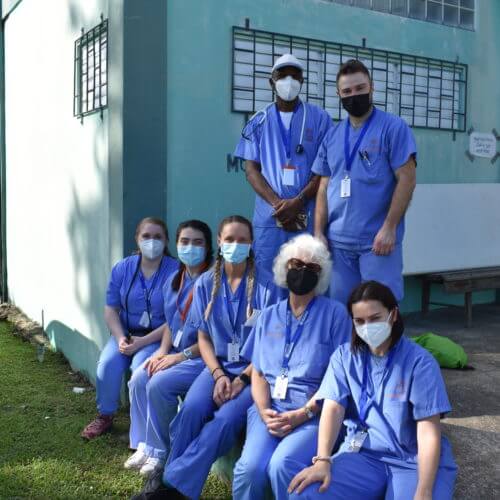
Crisis Management & Emergency Response
We take security very seriously at IMR. It is our job to ensure that security precautions are in place, but please keep in mind that we cannot guarantee your safety on the trip.
- We continuously review all current activities occurring on the ground, and we work with the State Department and the U.S. Embassy to know the ground situation to the best of our ability.
- A security training conference call is available to our volunteers where we detail our security procedures that are in place for the trip.
- We take many security precautions such as radios, a buddy system, emergency evacuation plan and security planning.
- We protect the privacy of our volunteers in the field and provide them with customized contact information for their use.
- During our mandatory briefing, team members review our safety protocols, evacuation procedures, protocols for illness, natural disaster and terrorism.
We provide training to our teams to be cognizant of their own safety and to be aware of their surroundings. - Several policies require teams to adhere to safety issues.
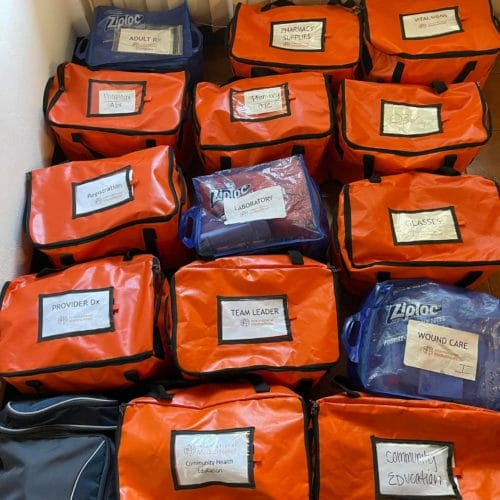
Trip Preparation
Donations to Our Himalayan Project Count!
Although each of our teams only have the opportunity to be a part of the IMR project in the Himalayans for a short time, IMR’s work in the Himalayans is long-term and sustainable. Your dollars are a direct investment into saving and changing lives. Your program fee is allocated to the overall mission while 15 percent goes directly into your personal logistics.
IMR supports the villages year-round. Our goal is to never uncover a need that we cannot take care of. We support the communities, the health clinics, the team year-round, and the patients when in need. IMR has provided five helicopter evacuations of patients in critical need from the circuit into Kathmandu. Whether it’s saving the eye of a 10-year-old boy in need of a very specialized optic surgery or providing knee and leg surgery for a young lady, IMR answers the call. Read their stories on our blog.
Minimum Donation
Your generous donation helps to save and change lives every day.
Your charitable investment will go toward ongoing global relief to care for the underserved and vulnerable people of this community. As a member of this medical mission team, you will elevate the long-term impact of sustainable, capacity-building efforts that improve the health, wellness, and quality of life of those most in need. A small portion of your donation includes:
- Clinic supplies and medications for patients
- Clinic participation
- Transportation, accommodations, and meals as outlined in the itinerary
Payment Deadlines
To save $200, a 50% donation payment must be received 14 weeks before the mission’s scheduled start date. Full donation payments must be received 4 weeks before the mission’s scheduled start date.
Early Bird Savings Opportunity
To be eligible, upload all your required documents and forms, and make a minimum of 50% of your donation payment by 14 weeks prior to your mission’s scheduled start date.
Flexible Flight Options
Volunteer with Airfare
You may choose to book a flight with us for an additional fee. Details on the available flight routing and US departure city will be announced on the Early Bird Date. Airport transportation to and from the team’s accommodations are also included with this option. Depending on your departure city, you may still need to purchase another flight in addition to this one. After this flight has been booked, you may contact our travel agent, Worldwide Navigators, for assistance booking any necessary additional flights.
Benefits of Flying at a Subsidized Rate
- Travel with other members of your team on select routing
- Fly on a subsidized ticket at a lower rate
- Transport to and from the airport included
Volunteer without Airfare
Many team members choose to book their flight(s) to and from the mission location independent of IMR. This is a great option if would like to extend your stay in the area to tour and explore, or if the routing from you home airport is more feasible for you. If you choose to fly independently, please note that your transportation in between the airport and the team’s accommodations will not be provided. This will need to be arranged separately. Our partner for travel, Worldwide Navigators, would be happy to assist you in coordinating flights and/or transportation. You can contact them at travel@worldwidenavigators.com.
Benefits of Flying Independently
- Extend your stay and customize your dates of travel
- Choose your departure location
- Customize your class of service
Featured Enhancements
**To purchase any of the above Featured Enhancements for your mission please contact our office at office@imrus.org or call at (970) 635-0110.
Fundraising
IMR provides a fundraising packet to all registered trip applicants that is full of ideas on how you can raise support for your trip or for supplies to be utilized on this specific mission. When soliciting donations for any of our trips, success is completed through telling your personal story. Why do you want to go? Who will you help? Why their donation can help you achieve the ultimate goal. Tell your story to anyone and everyone. Refer your potential or active donors to our website or Facebook page and to your personal fundraising page. You may share your personal fundraising URL on Facebook and other social media sites.
Join Us in Making a Difference.
Bring much-needed acute medical and dental care to a beautiful, culture-rich destination. You can join an IMR medical mission team today!
